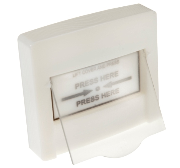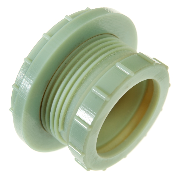 Rapid Prototypes That Work
Rapid Prototypes That Work
For high resolution, fully functional rapid prototypes in a variety of materials there are very few options. For a cost effective solution 3D printing is the best way to go. Rutland Plastics has an Objet Connex 350 one of the world’s only 3D printers able to combine different materials within a single 3D model. You receive plastic prototypes as close as you can get to the final manufactured product.
Injection moulding specialist Rutland Plastics provides a full range of services from design, through making the mould, carrying out the moulding and machining, to final assembly services. The company has now filled the one gap in its offering – rapid prototyping, and chose the Objet Connex 350 as it met all the requirements.
“Many 3D printers offer a quick and relatively cheap way to print prototype parts, but they can be very fragile. They are good for checking form and fit, but in most cases they aren’t really functional,” says Rutland Plastics’ marketing manager, Stuart Lovett. “With the Objet Connex there are two cartridges with two different materials, so you can either print the material that is in the cartridge, or these materials can be blended together to produce what are called digital materials.”
Material Possibilities
The print heads have 96 nozzles that can be controlled independently so it is possible to produce composite materials. By combining two standard materials in varying proportions it is possible to offer a choice of 123 different materials made up of both standard and composite, digital materials. As 106 different digital materials are derived from just 17 primary materials, every additional new material can open up tens of new digital material options.
Options that are available include materials that simulate polypropylene, ABS, transparent (similar to acrylic), high temperature (thermal resistance up to 90C with high impact) and a wide range of rubber-like materials from Shore 40A to 95A. The final prototypes can be painted, drilled, machined and even chrome-plated.
 The main advantages of this process are:
The main advantages of this process are:
Different Materials Within One Model. It is possible to selectively deposit up to 14 different materials (12 digital materials plus the 2 materials straight from the cartridges) in a different part of the model with sharp, defined material boundaries. This eliminates the need to design and print separate parts using different materials and then assemble them in a post-printing process, such as gluing.
Different Material Models on the Same Print Tray. The technology also allows for simultaneously building parts in different materials on a single tray. This increases efficiency and reduces cost.
Create Greyscales and Tones. By combining Rigid Black and Rigid White, for example, in various ratios it is possible to create different greyscales. This also means it is possible to simulate printed text and signs on a model, mark desired areas of interest and even add captions.
Simulate Opaque Shades with Clear Transparency. Parts can be created in transparent materials with the internal structures in black, white, blue or grey shade combinations so they are visible ‘beneath the skin’. The capability to use this approach has many applications.
Combine Rigid Material with Rubber-like Over-Moulding. It is possible to simulate over-moulded and two-shot injection moulded parts in a single build. Prototyping in this way also aids in the selection of the materials that will be used in the final product.
Applications
The prototypes that Rutland Plastics produces are suitable for full testing, not only cutting time-to-market but also reducing the risk of making costly alterations to a mould tool at a later date.
One of Rutland Plastics’ customers tasked the company with redesigning a specialist draining pump. The customer was concerned that the inlet on the new design would allow some of the water to flow back out. The alternative was a smaller inlet that would have prevented this but resulted in reduced efficiency. RP printed a prototype of each design for the customer to carry out full product testing and ascertain that there was no risk of flowback on RP’s original, more efficient design.
“None of the other printing processes available would have been able to make a prototype that withstood that kind of testing,” says Lovett. “And to make it by some other method would have been too expensive. This way they proved the design and the tool was modified to get the best possible performance from their product.”
Low Volume Production. The high resolution 3D print process can be an economically viable method of producing small numbers of parts. Another area currently under development is the printing of mould tool cavities. This could be a more cost effective approach than traditional tooling when a part suitable for injection moulding is to be produced in 10’s rather than much larger quantities.
Rutland Plastics Ltd
Tel: 01572 723476
